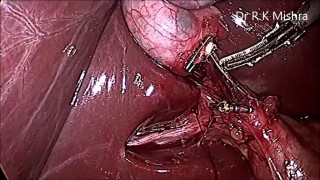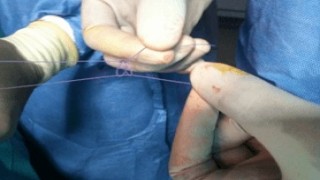Robotic reversal of tubal sterilization offers renewed hope for fertility restoration
Add to
Share
1,340 views
Report
2 years ago
Description
Introduction: Tubal sterilization, a permanent method of contraception, has long been a popular choice for individuals seeking to prevent future pregnancies. However, circumstances can change, and some individuals may desire to restore their fertility after undergoing tubal sterilization. In recent years, advancements in surgical technology have paved the way for a groundbreaking procedure known as robotic reversal of tubal sterilization. This essay explores the potential of this innovative technique in offering renewed hope for fertility restoration. Body: Understanding Tubal Sterilization: Tubal sterilization is a surgical procedure that permanently blocks the fallopian tubes, preventing the eggs from reaching the uterus and thus inhibiting pregnancy. This procedure has traditionally been considered irreversible, leaving individuals with limited options for restoring their fertility. The Rise of Robotic Surgery: Robotic surgery has revolutionized the field of minimally invasive procedures, enabling surgeons to perform complex surgeries with enhanced precision and control. Robotic systems utilize robotic arms, controlled by the surgeon, to perform delicate movements and manipulate instruments with greater dexterity than traditional laparoscopic techniques. Robotic Reversal of Tubal Sterilization: The robotic reversal of tubal sterilization offers a ray of hope for individuals seeking fertility restoration. This procedure involves the use of a robotic surgical system to meticulously dissect and reconnect the fallopian tubes, allowing for the natural passage of eggs and increasing the chances of conception. Advantages of Robotic Reversal: a) Enhanced surgical precision: Robotic systems provide surgeons with a three-dimensional, high-definition view of the surgical field, enabling them to perform intricate maneuvers with utmost precision. The robotic arms offer a range of motion that mimics the human hand, allowing for meticulous tubal reconnection. b) Minimally invasive approach: The robotic reversal of tubal sterilization is performed through small incisions, resulting in less pain, reduced scarring, and faster recovery compared to traditional open surgeries. This minimally invasive approach improves patient comfort and promotes quicker return to normal activities. c) Increased success rates: The precision and accuracy offered by the robotic system enhance the success rates of tubal reconnection. With improved visualization and control, surgeons can optimize the chances of successful fertility restoration, providing renewed hope for individuals who desire to conceive after tubal sterilization. Considerations and Limitations: While the robotic reversal of tubal sterilization holds great promise, it is important to note that the procedure may not be suitable for everyone. Factors such as the type of sterilization method, the length of the remaining fallopian tubes, and individual health conditions need to be carefully evaluated before determining the feasibility of the procedure. The robotic reversal of tubal sterilization represents a groundbreaking advancement in the field of reproductive medicine, offering renewed hope for individuals who wish to restore their fertility after undergoing tubal sterilization. Tubal sterilization, a widely used permanent method of contraception, has traditionally been considered irreversible, leaving individuals with limited options if they later desire to conceive. However, with the advent of robotic surgery, a new possibility has emerged for fertility restoration. Robotic surgery has revolutionized the landscape of minimally invasive procedures, allowing surgeons to perform complex surgeries with enhanced precision and control. Robotic systems consist of robotic arms controlled by the surgeon, which manipulate surgical instruments with a range of motion that closely resembles the human hand. This level of precision, coupled with the three-dimensional high-definition visualization provided by robotic systems, has paved the way for delicate and intricate procedures, including the robotic reversal of tubal sterilization. The robotic reversal of tubal sterilization involves the meticulous dissection and reconnection of the fallopian tubes, enabling the natural passage of eggs and increasing the chances of conception. This advanced technique offers several advantages over traditional methods. First and foremost, the enhanced surgical precision afforded by robotic systems ensures accurate tubal reconnection, maximizing the success rates of fertility restoration. Surgeons can perform precise and intricate maneuvers, ensuring proper alignment and patency of the fallopian tubes. Additionally, the robotic reversal of tubal sterilization is performed using a minimally invasive approach. Small incisions are made, through which the robotic arms and surgical instruments are inserted. This approach results in less post-operative pain, reduced scarring, and faster recovery times compared to traditional open surgeries. Patients can experience a quicker return to their daily activities, fostering a smoother transition into their fertility journey. While the robotic reversal of tubal sterilization offers renewed hope for individuals, it is important to note that not everyone may be a suitable candidate for the procedure. Factors such as the type of sterilization method, the length and condition of the remaining fallopian tubes, and individual health considerations need to be carefully evaluated by a medical professional to determine the feasibility and potential success of the procedure. Conclusion: The robotic reversal of tubal sterilization represents a significant breakthrough in the field of fertility restoration. This innovative technique, leveraging the precision and control of robotic surgery, offers renewed hope for individuals who wish to conceive after tubal sterilization. With enhanced surgical accuracy, a minimally invasive approach, and increased success rates, this procedure unlocks possibilities for fertility restoration and provides a beacon of hope for those who desire to expand their families. As technology continues to advance, the future holds even greater promise for the field of reproductive medicine, offering renewed hope and possibilities for individuals seeking to restore their fertility.
Similar Videos






